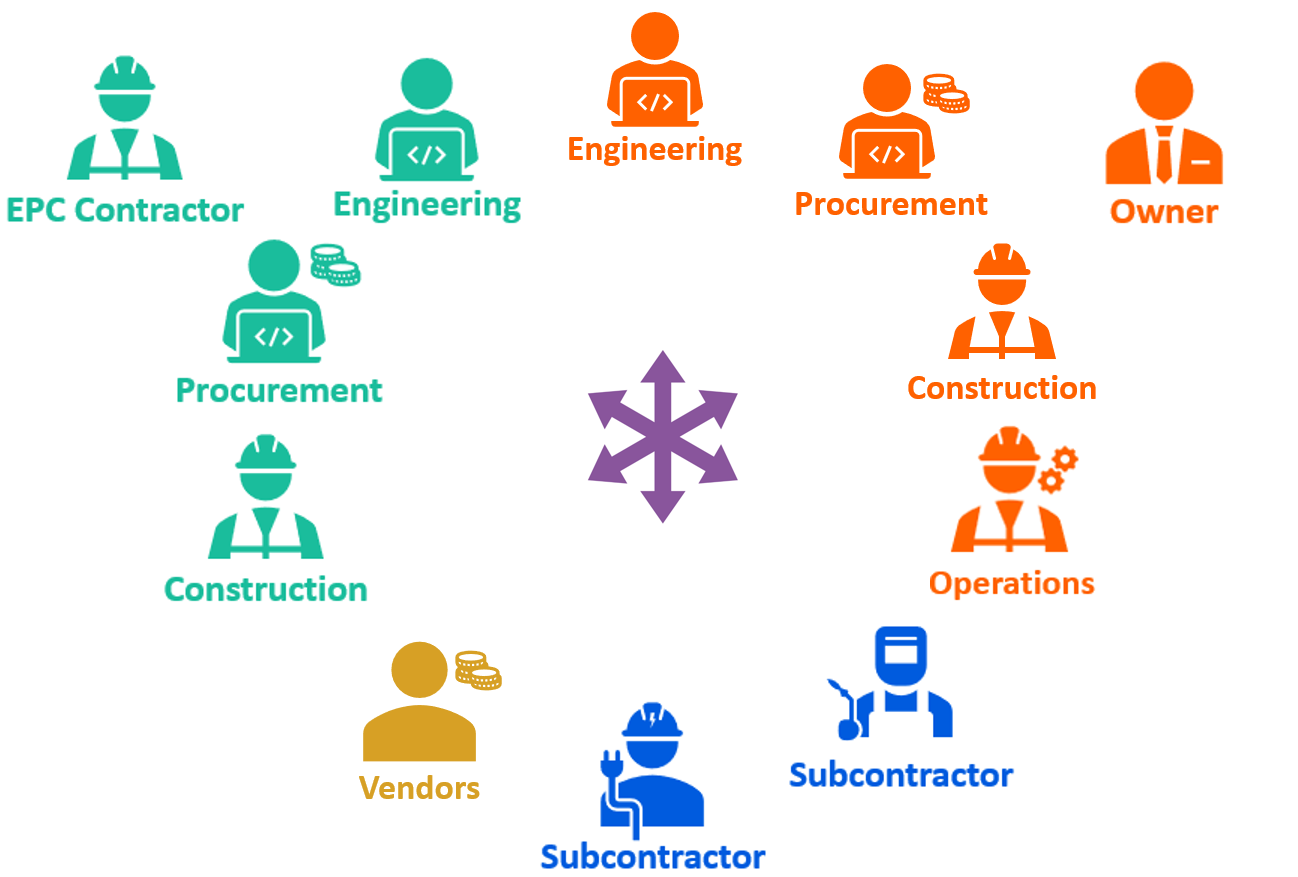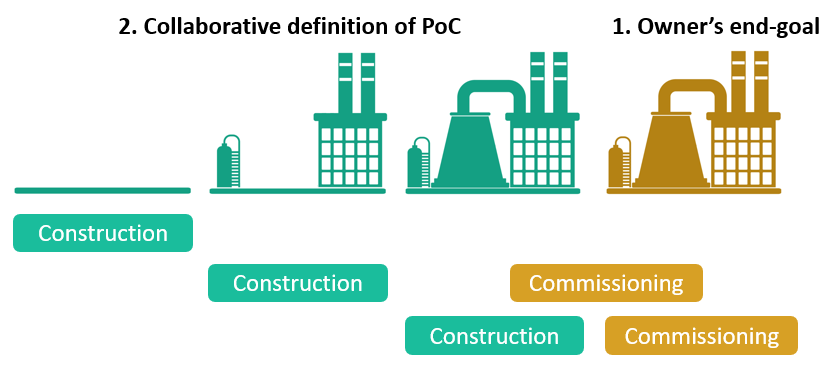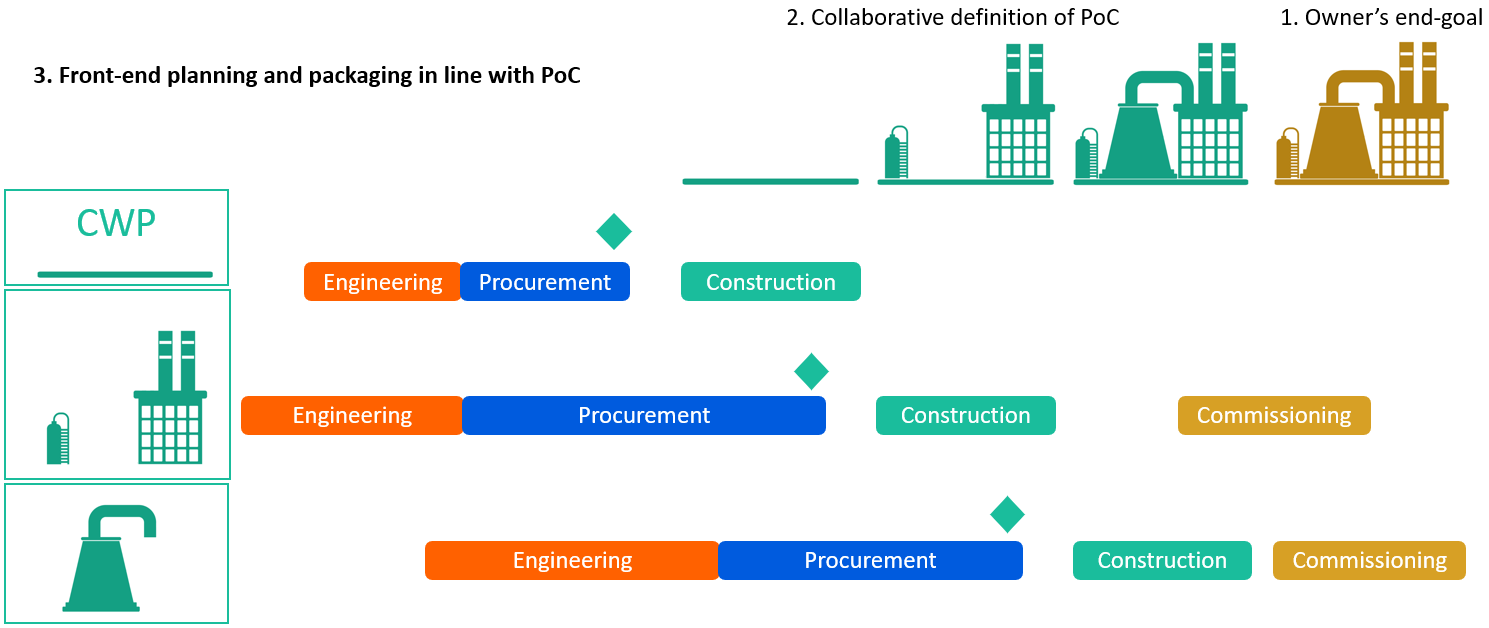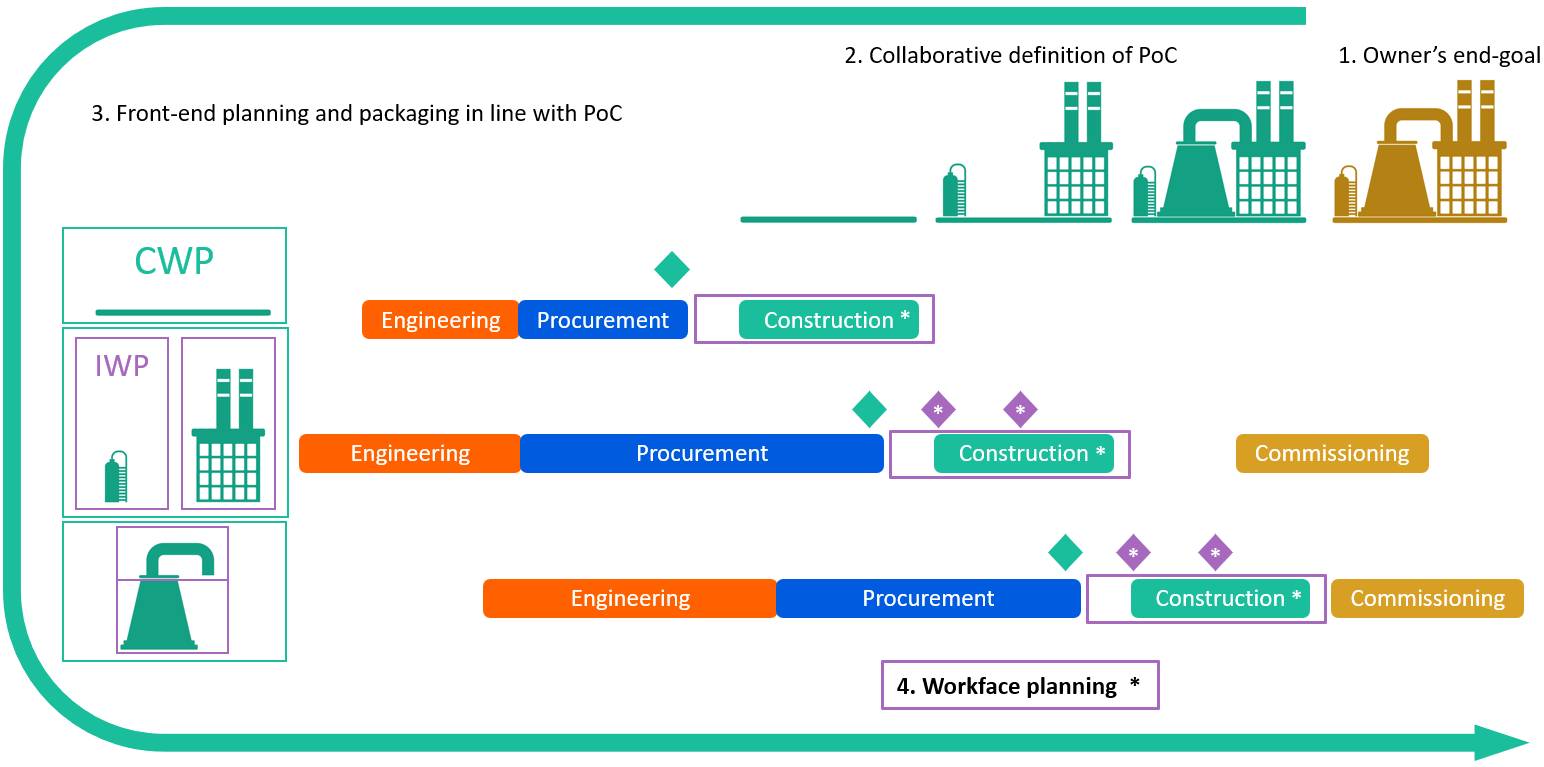
Last things first!
How Advanced Work Packaging drives alignment on your EPC project



The old ways are not always best. With high pressure on cost, schedule and safety performance – many clients and contractors struggle with delivering projects successfully. While the principles behind Advanced Work Packaging are not necessarily new, the approach does offer a fresh and understandable view on how to manage EPC projects. Let’s first look at the current state.
As read in an Oil & Gas Engineering Guide:
‘The execution of a project for an industrial facility consists of three main activities: Engineering, Procurement and Construction, which are followed by Commissioning and Start-up.’
‘Engineering design is the first and most critical part ..., that will then be played by all project functions: Procurement procures what Engineering specified and Construction erects as per engineering drawings.’
This indicates how Capex projects are typically approached. From left to right, first things first! And so, armed with the latest tools and techniques, project managers tackle these complex projects, starting with ‘the first and most critical part’. Assisted by a project controls engineer, a baseline plan is established and controlled throughout the execution. What comes next might sound familiar, as it is the reality for many construction projects... The actual plan diverges from the baseline, a schedule & cost overrun follows and resources from Owner, Engineer and Contractors are now shifted towards protecting own interests rather than executing the project.
So what went wrong and – more importantly – how can we do better?
Multiple causes can be found for project failure, but generally speaking they can be traced back to either one of the following:
Disconnected, unrealistic planning
Planning is no more than our best guess for one scenario. The more information we have, the better our ‘guess’ will be. In a recent blog we highlighted the existence of a ‘field disconnect’, stating site personnel perceive schedules as unrealistic and theoretical because they do not match with their reality in the field. In a broader sense all interfaces are at risk of being disconnected. EPC projects are complex and involve many interconnected stakeholders and environments. A realistic plan reflects the requirements and context of all parties involved, which cannot be achieved by forward scheduling from an engineering point of view only. And yet on many EPC projects, the schedule is built by the Engineer’s scheduler without properly incorporating information from others. As a result, false assumptions and delays become visible when they can no longer be mitigated and the project team is not committed to the imposed, unrealistic schedule.

This issue extends beyond planning processes into the actual work. Too often Engineering or Procurement activities are not organized in a best-for-project manner, but simply according to what is practical or conventional for the department itself. Deliverables are thrown over the fence and Construction is left to match these with their execution strategy.
Similarly, construction activities are generally aimed at achieving a singular Mechanical Completion milestone even though the work is not ‘done’ until after the successful Commissioning & Start-up sequence by the Owner’s operational team.
Capturing the full context early is vital in establishing an achievable, realistic plan.
Inefficiency in execution
The important question here is what is driving that inefficiency. Do we not have sufficient laborers? Is poor design causing field rework? Are we lacking materials? Is access restricted due to another crew? Has the isometric not been released? It is indeed the underlying constraints that need to be resolved to increase labour productivity. As these constraints are often not known by the Owner / Engineer scheduler and cannot be managed by CPM scheduling, different approaches such as lean scheduling have been introduced.
A better way
Advanced Work Packaging (AWP) has been developed as an industry best practice by the Construction Industry Institute (CII) to counter both. AWP is a construction-driven project execution approach which is typically defined by the phrase ‘beginning with the end in mind’. Instead of having Construction erect as per Engineering drawings, AWP fundamentally turns this process around by having Engineering design as per Construction plan.
AWP relies on following key principles:
- Early Construction involvement in defining the Path of Construction (PoC)
- Front-end planning and packaging in support of the PoC
- Workface planning to support constraint-free execution in the field

AWP fundamentally turns the process around by having Engineering design as per Construction plan.
The Path of Construction
After project definition the PoC is established as a logical sequence of high-level construction activities required to realize the asset in the field by the Owner’s desired completion date. The PoC is established in collaborative sessions and aligns all stakeholders with the common end-goal, being an operational asset. All requirements and constraints for construction activities are analysed to determine the optimal construction sequence. The PoC then serves as basis for backward planning and a progressive breakdown of the scope into smaller, manageable packages.
Learn More
Front-end planning and Packaging
A first step in breaking down the project is defining geographical areas of work, also called Construction Work Areas (CWAs). This logical split is usually defined alongside the PoC. The multi-disciplinary work areas can be highlighted on a plot plan or 3D model and are further broken down into Construction Work Packages (CWPs).
The CWPs link back to the PoC, are discipline specific and encompass several weeks or months of work (level 3). A CWP contains scope, drawings, resources, schedule and cost. The CWP boundaries are identified in the definition phase or early in the detailed engineering phase and will be used to create Engineering and Procurement Work Packages (EWPs / PWPs). The latest delivery date for these packages is obtained by backwards scheduling, again in collaborative planning sessions. This process will create high visibility for potential issues and constraints that need to be addressed upfront.
Packaging and planning the work, in line with the PoC is a means of ensuring construction priorities are translated into engineering and procurement priorities.

Workface planning
Workface planning is the process of converting level 3 CWPs into Installation Work Packages (IWPs) and releasing them for execution once they are free of constraints. This process is performed on a rolling wave basis, as the CWPs are detailed out and their respective execution windows approach. Whereas the previous key principles focused on top-down, deliverable based planning, workface planning makes the shift towards work-oriented planning. Specialised workface planners, typically within the contractor’s organization and close to the field, facilitate this shift.
The IWPs are – by definition – discipline specific and contain all information required for a construction crew to organize part of the installation in the field (up to one week). Being able to accurately track the deliverables and context generated by the AWP workflow is key in workface planning. The workface planners will proactively manage and resolve constraints before they become issues in the field. By doing so, lost time is reduced and field productivity & predictability increases. As supervisors are unburdened of these planning activities, they can spend more time in the field, which benefits site safety.

Conclusion
‘Traditional’ left to right planning fails to provide the full context for an EPC project cycle, leaving Owner, Engineer and Contractors frustrated with an unrealistic plan. Delays in Engineering & Procurement are compounded in Construction, priorities in different project phases are not aligned and field productivity is low due to ad-hoc, reactive problem solving.
Advanced Work Packaging is a structured approach to managing EPC projects which focuses on enabling the most efficient execution phase. By combining collaborative, backwards scheduling from a common end-goal and constraint-free field execution, AWP drives alignment between Owner, Engineer and Contractors.
AWP identifies and resolves constraints upfront, both in the PoC and the workface planning, which promotes predictability and productivity, ultimately matching the plan with the work in the field.
Research indicates the effectiveness of AWP, accelerating its widespread adoption. At Proove, we can help with its implementation on your projects. We recently even signed a partnership with InEight, offering a suite specifically to support AWP.


